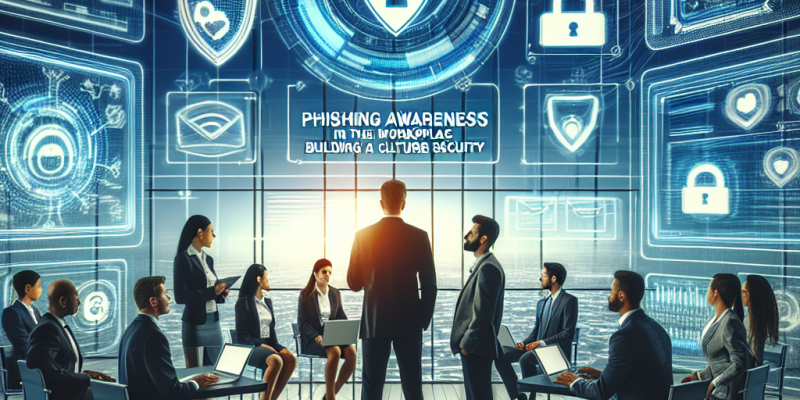Phishing Awareness in the Workplace: Building a Culture of Security in 2025

In 2025, cyber threats continue to evolve, and phishing remains one of the most significant risks for organizations. Phishing is a type of cyber attack where criminals attempt to trick people into giving up sensitive information, like passwords or credit card details. As our reliance on digital communication increases, it is essential to build a strong culture of security within the workplace. This article will discuss effective strategies for enhancing phishing awareness among employees and creating a secure work environment.
Understanding Phishing
Phishing typically comes in the form of emails, messages, or even phone calls. Attackers often disguise themselves as trustworthy sources, such as banks or popular companies. They use persuasive language to encourage employees to click on malicious links or download harmful attachments. Understanding the various forms of phishing, including spear phishing and whaling, is fundamental for employees to recognize potential threats.
The Importance of Employee Training
One of the most effective ways to combat phishing is through regular training sessions. In 2025, many organizations are adopting interactive training programs that simulate real-life phishing scenarios. These exercises allow employees to practice identifying suspicious emails and messages safely. Regular updates and refresher courses also ensure that staff stay informed about the latest phishing techniques.
Key Topics for Training Sessions
-
Recognizing Red Flags: Teach employees how to identify warning signs, such as poor spelling, generic greetings, or urgent requests for information.
-
Safe Browsing Practices: Encourage the use of secure websites, and explain the importance of checking URLs before clicking links.
-
Reporting Procedures: Establish clear procedures for reporting suspected phishing attempts. Make sure employees know who to contact and what to include in their reports.
-
Multi-Factor Authentication: Promote the use of multi-factor authentication (MFA) to add an extra layer of security, even if credentials are compromised.
Creating a Culture of Security
Building a culture of security within the workplace requires ongoing commitment from leadership and employees alike. Here are some strategies to foster this environment:
-
Leadership Commitment: Leadership should prioritize cybersecurity and demonstrate this commitment through policies and regular communication about its importance.
-
Open Communication: Encourage staff to share concerns about potential phishing attempts without fear of judgment. An open dialogue promotes a proactive approach to security.
-
Recognition Programs: Consider establishing a system to reward employees who identify and report phishing attempts. This not only motivates employees but also reinforces the importance of vigilance.
-
Regular Security Audits: Conduct periodic assessments of your organization’s cybersecurity measures. This can help identify vulnerabilities and ensure that policies remain effective.
The Role of Technology
In addition to employee training, technology plays a vital role in enhancing security. Advanced email filters and threat detection software can help identify phishing attempts before they reach employees. Organizations should regularly update their software to ensure they have the latest defenses against evolving threats.
Conclusion
As we move through 2025, the need for phishing awareness in the workplace is greater than ever. By implementing comprehensive training programs, fostering a culture of security, and utilizing technology, organizations can significantly reduce the risk of falling victim to phishing attacks. Together, employees and management can create a safer work environment where everyone feels empowered to protect sensitive information. In this digital age, prioritizing cybersecurity is not just a responsibility—it’s a necessity.














